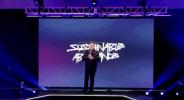אילאן מאסק זאגט אז טעסלא וועט האבן די אפציע פון שיקן א טעקסט אינמיטן דרייוון


Elon Musk announced at Tesla’s 2025 Shareholder Meeting that the company will soon allow drivers to text while using Full Self-Driving (FSD), marking one of the most significant steps yet toward a more autonomous driving experience. The update, expected within the next month or two, will debut as part of FSD version 14 and will also reduce the system’s driver attention monitoring strictness.
According to Musk, Tesla’s extensive real-world data has demonstrated that FSD performs with a “massive safety margin” even compared to human drivers. This confidence, he said, justifies relaxing some of the current monitoring protocols that many users have found overly intrusive — particularly false positives from in-cabin camera alerts triggered by harmless head movements or momentary glances away from the road.
Under the new update, Tesla vehicles running FSD will continue to classify as Level 2 systems, meaning drivers must remain ready to take control at any moment. However, Musk emphasized that Tesla’s goal is to “transition from supervised to unsupervised autonomy,” beginning with easing restrictions that frustrate responsible users. “If the data proves it’s safer than a human,” Musk said, “it’s time to treat it like one.”
The change represents a philosophical shift in Tesla’s approach — prioritizing user experience alongside safety data. The decision reflects Musk’s belief that too much nannying from driver monitoring systems can erode trust in automation and hinder real-world adoption. “We built FSD to free people, not to lecture them,” one Tesla engineer reportedly told attendees after the meeting.
Critics are already questioning whether allowing drivers to text will invite regulatory scrutiny, as Tesla’s driver monitoring standards have been a frequent target of federal agencies. Musk appeared unfazed, suggesting that Tesla’s empirical safety data will speak for itself once the update rolls out. “It’s hard to argue with numbers,” he said. “The car simply doesn’t crash.”
If successful, this FSD 14 release could mark a pivotal moment in Tesla’s march toward hands-free autonomy — redefining what “driver assistance” means and setting a new benchmark for human–machine cooperation behind the wheel.
גאלערי
ווידעאס